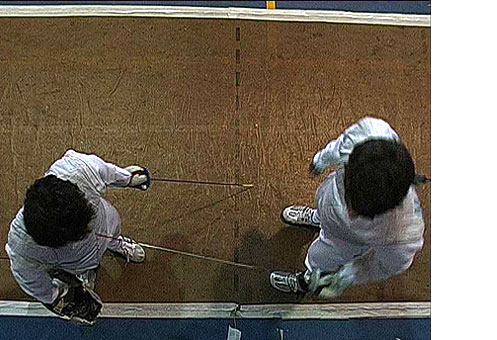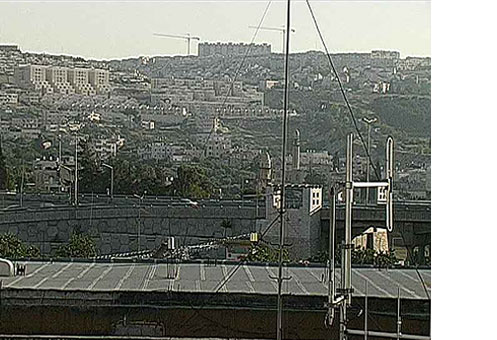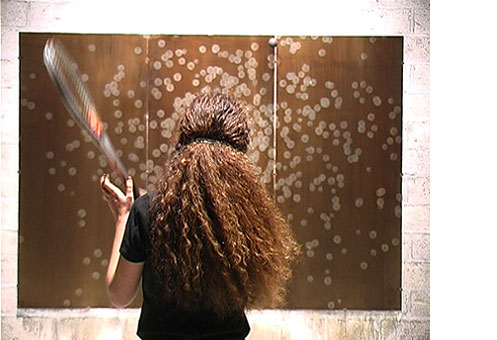







Shown at the Contemporary Art Center
Vilna, Lithuania. 2003
This video installation juxtaposes two strong sounds – the call of the muezzin, crooning “Allah Akbar,” and the winning cry of the fencing combatant at the decisive moment when, having stabbed his opponent, he unmasks his face, and yelps, “Opallah,” his victory cry. Reversing expected proportions, the fencing video, which shows the combatants from above, is spread on a wide movie screen, almost as long as an entire gallery wall. At an angle, across from it, and squeezed to the size of the window from which it was filmed, the second video presents a panoramic view of the area surrounding the mosque where the muezzin was recorded. The view includes an industrial complex, the mosque itself, and a tiny, almost invisible football field with a game in process. While the fast-moving fencing video takes place mostly in the dark, the human movement recorded in the semi-urban scene is so tiny as to be almost invisible. Only time moves over the landscape as it shifts from day into night. The call to pray, recorded through a whoosh of urban noise, and the clear, exuberant cry of the fencer meet each other loudly in the gallery space. The viewer is surrounded by these strong sounds and the experience their interaction creates.